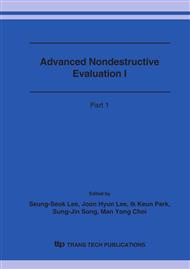p.1332
p.1336
p.1340
p.1344
p.1348
p.1353
p.1357
p.1360
p.1365
Residual Stress Measurement and Evaluation on Ceramics with X-Ray and Indentation Method
Abstract:
In this report, the indentation method of measurement for residual stress in structural ceramics is discussed. The residual stresses in Al2O3, Si3N4 and ZrO2 ceramics were evaluated with the indentation method. The value obtained by the indentation method was examined as a function of the microstructure, using Al2O3 ceramics differing in microstructure (grain size and aspect ratio). The residual stress values in Al2O3 and Si3N4 obtained by the indentation method at 98 N agreed well with the values obtained by the X-ray method. The residual stress value in ZrO2 obtained by the indentation method was close to the value obtained by the X-ray method, when the indentation load was 294 N. For estimating the residual stress in ZrO2 with the indentation method, the influence of the phase transformation induced by the indentation is added to the original residual stress, when the indentation is small. The value obtained by indentation method differed with the aspect ratio of the grains in Al2O3. It was thought that the origin of the variation was the difference in crack propagation resistance in different materials
Info:
Periodical:
Pages:
1348-1352
Citation:
Online since:
October 2006
Authors:
Keywords:
Price:
Сopyright:
© 2006 Trans Tech Publications Ltd. All Rights Reserved
Share:
Citation:


